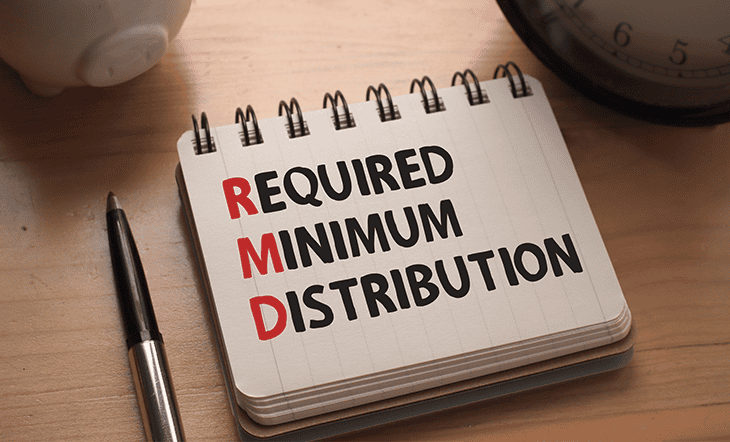Home > Retirement > What to do if you made excess Roth IRA contributions
What to do if you made excess Roth IRA contributions
Retirement planning involves setting financial goals and creating a strategy to achieve them in order to ensure a secure and comfortable future. There are a number of retirement saving vehicles that you can choose from, such as a 401k retirement account, mutual funds, pension plans, index funds, stocks, bonds, real estate, etc.
An Individual Retirement Account (IRA) is a common retirement vehicle used to save for retirement. IRAs can be used for retirement and other needs. Some people also use them to save for their children’s higher education expenses. There are two main types of IRAs: Traditional and Roth. Traditional IRAs offer tax-deductible contributions and tax-deferred growth, while Roth IRAs offer tax-free withdrawals in retirement. Both these accounts can be opened at a bank or with a broker, insurance company, or union. IRAs can help with retirement planning by offering a way to save and invest for the future and by providing a range of investment options to match your individual risk tolerance and financial goals.
However, when investing in a Roth IRA, it is essential to adhere to the rules and regulations. Roth IRAs have contribution limits and restrictions for withdrawals that you need to incorporate into your retirement plan to avoid excess Roth IRA contributions. You may also consult with a professional financial advisor who can advise you on what to do if you have made excess contributions to your Roth IRA account.
Read below to learn what happens if you contribute too much to a Roth IRA and how to plan your investments wisely to avoid doing so.
Why is there a limit on the amount you can contribute to a Roth IRA?
Contribution limits provide structure to retirement savings. The government imposes contribution limits on Roth IRAs for a variety of reasons, including limiting the amount of tax-preferred treatment and ensuring that IRAs are not used to accumulate wealth unfairly. In addition, contribution limits help ensure that Roth IRAs are used for their intended purpose, and allow the government to earn revenue. By setting limits, the government can help to ensure that IRAs are used in a way that is consistent with their intended purpose and that the benefits of IRAs are available to a broader range of investors.
It is important to understand that Roth IRAs are tax-advantaged accounts. As a result, most people use them to gain tax benefits while also saving for their retirement. However, it is primarily the tax benefits that set them apart from other savings and investment vehicles. Contribution limits serve as a way to limit the amount of tax-preferred treatment that you can receive from a Roth IRA. Tax-free withdrawals for Roth IRAs can help you save a lot of money. The contribution limits help to ensure that these tax benefits are not used excessively. This way, you use them to save for retirement and not to avoid paying taxes on a large amount of income.
Contribution limits also help to ensure that IRAs are used ethically. If there were no contribution limits, people could use IRAs to protect a large portion of their income from taxes and shift the tax burden to others. By setting limits, the government can ensure that taxes are uniformly paid by all taxpayers, and no one gets an undue advantage. The contribution limits also help the government earn money and use it for public development. Taxes are a major source of income for governments. With high contribution limits, the tax savings would also be higher, robbing governments of the chance to earn revenue.
Lastly, contribution limits also help to make IRAs more accessible to a wider range of individuals. Without limitations, the tax benefits of IRAs would essentially be available to high-income individuals. The limits ensure that benefits are spread out more evenly, allowing more people to take advantage of the tax benefits of Roth IRAs.
What happens if you over-contribute to a Roth IRA?
In 2023, you can contribute up to $6,500 to a Roth IRA if you are under the age of 50, and $7,500 if you are 50 or older. People aged 50 or more have a catch-up contribution limit of $1,000. It is important to know your Roth IRA contribution limits are decided on the basis of your Modified Adjusted Gross Income (MAGI).
If you contribute more than these limits, you will owe a 6% tax penalty on your excess contributions. You will have to pay this when you file your income tax return for the concerned financial year. The penalty will be applied every year until you correct your mistake.
Below are the contribution limits for 2023:
| Filing status | MAGI in 2023 | Contribution limit |
| Married taxpayers filing jointly or qualifying widow(er) | Less than $218,000 | Up to the maximum limit |
| Married taxpayers filing jointly or qualifying widow(er) | More than $218,000 but lower than $228,000 | Reduced amount |
| Married taxpayers filing jointly or qualifying widow(er) | $228,000 or more | Zero |
| Single, head of household, or married taxpayers filing separately if you did not live with your spouse at any time during the financial year | Less than $138,000 | Up to the maximum limit |
| Single, head of household, or married taxpayers filing separately if you did not live with your spouse at any time during the financial year | More than $138,000 but lower than $153,000 | Reduced amount |
| Single, head of household, or married taxpayers filing separately if you did not live with your spouse at any time during the financial year | More than $153,000 | Zero |
| Married taxpayers filing separately and you lived with your spouse at any time during the year | Less than $10,000 | Reduced amount |
| Married taxpayers filing separately and you lived with your spouse at any time during the year | $10,000 or more | Zero |
How to withdraw excess contributions from Roth IRAs
In order to correct your excess Roth IRA contributions, you need to remove your excess contributions and the earnings on these contributions. For example, if you invested $2,000 in excess in a Roth IRA and earned 10% interest on it, amounting to $200, you will have to remove $2,200 from your Roth IRA. You can do this on or before the due date for filing your tax return. These withdrawals will not be considered withdrawals and will not be subject to the 10% penalty that is applied to an early withdrawal before the age of 59.5 years. Excess withdrawals will simply eliminate the investment from your account like it never happened.
It is essential to know how to calculate your excess contribution. The Internal Revenue Service (IRS) provides the following formula for the same:
Net income Attributable (NIA) = Excess contribution to be removed x Adjusted Closing Balance (ACB) – Adjusted Opening Balance (AOB)/ Adjusted Opening Balance
Here,
- The adjusted opening balance is the previous Roth IRA balance, including all permitted and excess contributions.
- The adjusted closing balance is the current value of the Roth IRA minus all distributions and transfers.
You can contact your Roth IRA plan administrator to correct the excess contribution. If you realize your mistake after the due date of filing the tax return, you can still remove the excess contribution within six months and file a return by October 15, if eligible.
SPONSORED WISERADVISORChoosing the right financial advisor is daunting, especially when there are thousands of financial advisors near you. We make it easy by matching you to vetted advisors that meet your unique needs. Matched advisors are all registered with FINRA/SEC. Click to compare vetted advisors now.
What other options can you consider if you have contributed too much to your Roth IRA?
Here are some things you can consider if you over-contribute to your Roth IRA:
1. Accommodate the excess contribution in the next year
You can contribute the excess amount to the following year. For instance, if you contributed $2,000 more than the prescribed limit for your income in 2022, you can remove this excess value and contribute it to the Roth IRA in 2023. However, you have to be mindful not to exceed the contribution limit for 2023. For instance, if the maximum contribution limit for 2023 is $6,000 for you, the $2,000 must be included in the $6,000. Hence, your new contributions should not amount to more than $4,000 for 2023 to ensure adherence to the contribution limits.
2. Contribute to a Traditional IRA
Also known as recharacterization, the IRS permits you to move the excess contribution to a Traditional IRA from a Roth IRA. However, the transfer should include the contribution as well as the earnings on your extra investments. You can either open a new Traditional IRA or move the money to an existing Traditional IRA. The transfer can be made as a trustee-to-trustee transfer before the due date for your tax return for the concerned tax year.
Common reasons for excess Roth IRA contributions
It is normal to make excess contributions to your Roth IRA. Most investors are likely to do this at least once in their life. However, spotting the reasons can help you keep an eye out for them and avoid them in the first place.
5 reasons you may make excess contributions to your IRA:
1. Lack of awareness:
You may not be aware of the contribution limits set by the IRS and may accidentally exceed the limit. This is common in investors, and the only way to avoid it is by being up to date with the latest limits. The IRS alters contribution limits for all tax-advantaged retirement accounts every year to accommodate the inflation rate in savings. You can check the official IRS website or refer to third-party sources to know the latest rules.
2. You just changed your job:
Changing jobs and varying incomes may result in miscalculating your MAGI and IRA limits. Sometimes, this can lead to excess contributions.
3. Late contributions:
Contributions made after the tax-filing deadline may be counted towards the current tax year, resulting in excess contributions if the contribution limit has already been reached.
4. Catch-up contributions:
Individuals may choose to make catch-up contributions after missing contributions in previous years, resulting in excess contributions. Keep in mind that the contribution limits are unique for every financial year. If you contribute less this year, you cannot make up for it by going over the permitted limit next year.
5. Automated contributions:
Automated contributions can lead to excess investments if not accounted for properly. Many times, you may not realize you are investing more money than you should, as the contribution is automatically deducted from your account.
Creating a financial plan that aligns with investment needs and income is vital. Contributing too much to a Roth IRA can have many more consequences than just the 6% penalty. They can lead to fewer savings for your present needs. They can upset your current lifestyle, force you to live below means, and leave you feeling less fulfilled. Contributing more than you need to also eliminates the chance to put that money into another investment vehicle that may offer you better gains in the long run without the penalties and tax. Lastly, excess contributions can also be a source of stress. The removal process can be time-consuming and complex, especially if you are used to filing your tax return on your own.
To conclude
It is important to be aware of the contribution limits for a Roth IRA and regularly monitor your contributions to ensure you do not exceed the limit. If you happen to make excess contributions, it is important to correct the mistake as soon as possible to avoid any potential penalties and fines from the IRS. It is also advised to always be up to date with the latest limits and rules. This can help you plan better and save time and money.
Excess Roth IRA contributions can trouble anyone. If you require help to find a suitable financial advisor who can help you understand what happens if you over-contributed to your Roth IRA, use the free advisor match tool to match with experienced financial advisors who can guide you on the same. Answer a few questions based on your financial needs, and the match tool will help connect you with 1-3 financial advisors that may be suited to help you.
For additional tips and strategies on how to effectively save for your retirement, visit Dash Investments or email me directly at dash@dashinvestments.com.
About Dash Investments
Dash Investments is privately owned by Jonathan Dash and is an independent investment advisory firm, managing private client accounts for individuals and families across America. As a Registered Investment Advisor (RIA) firm with the SEC, they are fiduciaries who put clients’ interests ahead of everything else.
Dash Investments offers a full range of investment advisory and financial services, which are tailored to each client’s unique needs providing institutional-caliber money management services that are based upon a solid, proven research approach. Additionally, each client receives comprehensive financial planning to ensure they are moving toward their financial goals.
CEO & Chief Investment Officer Jonathan Dash has been covered in major business publications such as Barron’s, The Wall Street Journal, and The New York Times as a leader in the investment industry with a track record of creating value for his firm’s clients.
Other posts from Jonathan Dash
Things You Should Know About RMDs if You Are Turning 73
Retirement accounts like the 401(k) and the Individual Retirement Account (IRA) are broadly classified as traditional, and Roth based on their taxability....
Should You Keep Your Money with Your Employer’s 401(k) Plan After You Retire?
One critical financial decision looms large as you approach retirement - how does a 401(k) work when you retire?...
6 Reasons Your Retirement Plan Might Change and How to Prepare For it
Planning for retirement is an essential part of securing a financially stable future. It can help you live...




